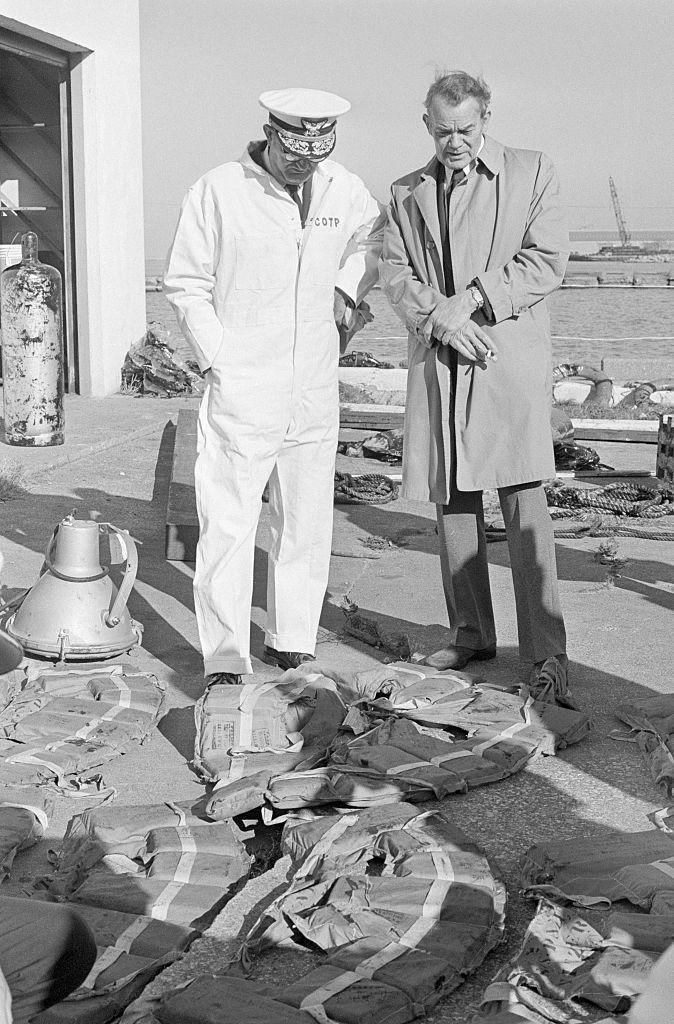Gordon Lightfoot Took Some Liberties When Writing “The Wreck of the Edmund Fitzgerald”

- Oops!Something went wrong.Please try again later.
In a seafaring tragedy that killed 29 crewmen, legendary Canadian folk singer Gordon Lightfoot found the inspiration for his most iconic song.
Lightfoot, who died on Monday at age 84, had top-10 hits in the United States with songs like “If You Could Read My Mind,” “Sundown,” and “Carefree Highway.” But his career-defining tune was “The Wreck of the Edmund Fitzgerald,” a seven-verse epic released in August 1976 about the sinking of a freighter in Lake Superior.
Lightfoot felt compelled to write the song after reading about the November 10, 1975, disaster in a Newsweek magazine article. Over the years, he also developed personal relationships with the families of the deceased sailors. The success of the Grammy-nominated track, which did take creative liberties with some of the accident’s details, has helped keep memories of the ship and crew alive.
Here’s what you need to know about the real S.S. Edmund Fitzgerald.
Construction and Early Incidents
Shipbuilding company Great Lakes Engineering Works built the S.S. Edmund Fitzgerald in 1957 and early 1958, after which the ship was christened on June 7, 1958, at River Rouge, Michigan.
According to the Detroit Historical Society, the Edmund Fitzgerald was the largest ship on the Great Lakes until 1971; it was 729 feet long and weighed 13,632 tons when empty. The name referred to owner Edmund Fitzgerald, the president and chairman of the board of the Northwestern Mutual Life Insurance Company.
The Cleveland-based Oglebay Norton ore mining company, which once employed John D. Rockefeller, chartered the ship. It sailed without incident for more than 11 years before suffering a series of mishaps. First, it ran aground in Sault Sainte Marie, Michigan, in September 1969. Then, over the course of the next year, it collided with another ship and a lock wall in separate incidents. In January 1974, the ship lost its bow anchor near Belle Isle in Detroit.
The Wreck of the Edmund Fitzgerald

On November 9, 1975, the ship’s captain, Ernest McSorley, and crew took off from Superior, Wisconsin, and headed for Detroit with a cargo of taconite pellets (that is, low grade iron ore). However, a blinding snowstorm hit that caused wind gusts of nearly 100 miles per hour and waves as high as 35 feet. The ship began taking on water and sank 530 feet to the bottom of the lake sometime after 7 p.m. the following night. None of the 29 people aboard survived.
The Edmund Fitzgerald sank so quickly that the exact cause of the accident is still a mystery, though dives to examine the wreckage revealed the ship had split in half. According to a 2015 article by MLive, some of the zanier theories even involve UFOs or a Bermuda Triangle–like area in the Great Lakes. More reasonable explanations have included flooding caused by faulty hatch covers, hull damage from grounding on a poorly-marked shoal, or simply a combination of rogue waves and a cargo load that was too big.
The ship’s 200-pound brass bell was recovered in 1995 and is on display at the Great Lakes Shipwreck Museum at Whitefish Point in Michigan. Today, there is a safety perimeter around the wreck site, which victims’ families consider a grave site.
Gordon Lightfoot Memorializes the Fitz

Lightfoot, a member of the Canadian Music Hall of Fame and recipient of the Companion of the Order of Canada civilian honor in 2003, changed and added some details about the accident to create his song. The lyrics indicate the ship’s cook talked to crew members about the bad weather, but there’s no way of knowing if it actually happened. Additionally, the ship in the song was on its way to Cleveland, instead of Detroit.
The song was nominated for two Grammys, including Song of the Year and Best Male Pop Vocal Performance.
According to MLive, Lightfoot altered lyrics over the years in response to listener objections and new information about the wreck. For example, the original version referenced a crewman in charge of the main hatchway that, upon its failure, said, “Fellas, it’s been good to know ya.” Lightfoot rewrote the line in order to avoid upsetting family members of crewmen that operated the ship’s hatches.
In 2015, Lightfoot made an appearance at the Great Lakes Shipwreck Museum to commemorate the 40th anniversary of the accident. He arrived a day ahead of a memorial service to speak with family members of the victims.
“[Lightfoot] wanted to make it more about the Fitzgerald and, particularly, the surviving Fitzgerald family members and not about Gordon Lightfoot,” said Bruce Lynn, the museum’s executive director. “The fact that he would come up to the museum, the fact that he would stay so connected with those family members, I think that says it all right there.”
